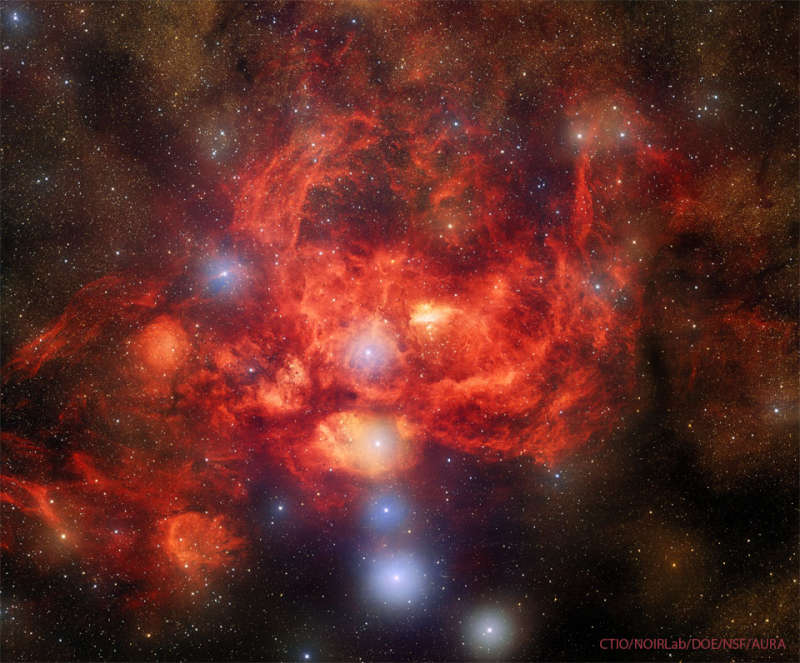Credit & Copyright: CTIO/NOIRLab/DOE/NSF/AURA;
Processing:
T. A. Rector
(U. Alaska Anchorage/NSFБs
NOIRLab),
J. Miller
(Gemini Obs./NSFБs
NOIRLab),
M. Zamani &
D. de Martin
(NSFБs
NOIRLab)
Explanation:
Why is the Lobster Nebula forming some of the most massive stars known?
No one is yet sure.
Cataloged as NGC 6357, the Lobster Nebula houses the open star cluster
Pismis 24 near its center --
a home to unusually bright and
massive stars.
The overall red glow
near the inner star forming region results from the
emission of
ionized
hydrogen gas.
The surrounding nebula,
featured
here,
holds a
complex tapestry of gas,
dark dust, stars still forming, and newly born
stars.
The intricate patterns are caused by
complex interactions between
interstellar
winds,
radiation pressures,
magnetic fields, and
gravity.
The image was taken with
DOE's
Dark Energy Camera on the 4-meter
Blanco Telescope at the
Cerro Tololo Inter-American Observatory in
Chile.
NGC 6357 spans about 400 light years and lies about 8,000
light years away toward the constellation of the
Scorpion.
1999 2000 2001 2002 2003 2004 2005 2006 2007 2008 2009 2010 2011 2012 2013 2014 2015 2016 2017 2018 2019 2020 2021 2022 2023 2024 2025 |
Январь Февраль Март Апрель Май Июнь Июль Август Сентябрь Октябрь Ноябрь Декабрь |
NASA Web Site Statements, Warnings, and Disclaimers
NASA Official: Jay Norris. Specific rights apply.
A service of: LHEA at NASA / GSFC
& Michigan Tech. U.
|
Публикации с ключевыми словами:
emission nebula - star formation - эмиссионная туманность - звездообразование
Публикации со словами: emission nebula - star formation - эмиссионная туманность - звездообразование | |
См. также:
Все публикации на ту же тему >> | |
